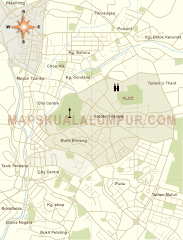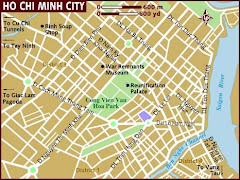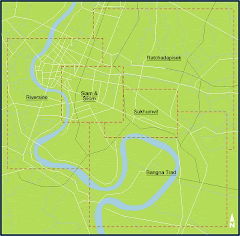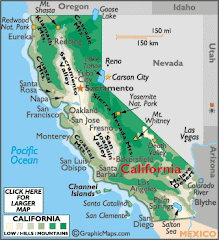WHY DIE FROM CANCER?Cancer Treatment:ALWAYS EAT FRESH FRUIT ON AN EMPTY STOMACHDr Stephen Mak told …..that he treats terminal cancer patients in an"un-orthodox" way, and many patients recovered. He explained, that before he uses solar energy to clear the illnesses of his patients, he believes on natural healing in the body against illnesses.
See the article below-----------------------------------------------
Dear Shereen,Thanks for the email on fruits and juices. It's one of the strategiesto heal cancer. Lately, my success rate in curing cancer is about 80%.Cancer patients shouldn't die. The cure for cancer has already beenfound, whether you believe it or not.I am sorry for the hundreds of cancer patients who die under theconventional treatments. Very few live for 5 years under conventionaltreatments, and most live for only about 2 to 3 years... Theconventional treatments don't make any difference, because most cancerpatients also live for about 2 to 3 years without any treatment. It isdifficult to cure cancer patients who've undergone chemo andradiotherapy, as their cells are toxic and weak. When there is are lapse, the cancer spreads very fast, as the resistance is poor.
Thanks, and God bless Dr Stephen MakEATING FRESH FRUITS. This is very informative!
�We all think eating fruit means just buying fruit, cutting it up andpopping it into our mouths. It's not that easy. It's important to knowhow and when to eat fruit.
�What's the correct way to eat fruit?
�IT MEANS NOT EATING FRUIT AFTER A MEAL! FRUIT SHOULD BE EATEN ON ANEMPTY STOMACH.
�Eating fruit like that plays a major role in detoxifying your system,supplying you with a great deal of energy for weight loss and otherlife activities..
�FRUIT IS THE MOST IMPORTANT FOOD.Let's say you eat two slices of bread, then a slice of fruit. The slice of fruit is ready to go straight through the stomach into the intestines, but it's prevented from doing so.
�In the meantime, the whole meal rots and ferments, and turns to acid. The minute the fruit comes into contact with the food in the stomach,and digestive juices, the entire mass of food begins to spoil. Eat your fruit on an empty stomach, or before your meal!
You've heard people complain: Every time I eat watermelon I burp, when I eat durianmy stomach bloats, when I eat a banana I feel like running to thetoilet, etc. This will not happen if you eat the fruit on an emptystomach. Fruit mixes with the putrefying other food and produces gas. Hence, you bloat!
Graying hair, balding, nervous outburst, and dark circles under theeyes - all of these will NOT happen if you eat fruit on an empty stomach.
�There's no such thing as some fruits, like orange and lemon areacidic, because all fruit becomes alkaline in our body, according to Dr. Herbert Shelton who did research on this matter. If you have mastered the correct way of eating fruit, you have the Secret of Beauty, Longevity, Health, Energy, Happiness and normal weight.When you need to drink fruit juice drink only fresh fruit juice, NOT from the cans. Don't drink juice that has been heated. Don't eat cooked fruit; you don't get the nutrients at all. You get only the taste... Cooking destroys all of the vitamins. Eating a whole fruit is better than drinking the juice. If you should drink the juice, drink it mouthful by mouthful slowly, because you must let it mix with your saliva before swallowing it. You can go on a 3-day fruit-fast to cleanse your body. Eat fruit and drink fruit juice for just 3 days, and you will be surprised when your friends say howradiant you look!
KIWI: Tiny but mighty, and a good source of potassium, magnesium,vitamin E & fiber. Its vitamin C content is twice that of an orange!
AN APPLE a day keeps the doctor away? Although an apple has a lowvitamin C content, it has antioxidants & flavonoids which enhances theactivity of vitamin C, thereby helping to lower the risk of coloncancer, heart attack & stroke.
STRAWBERRY: Protective Fruit. Strawberries have the highest totalantioxidant power among major fruits & protect the body fromcancer-causing, blood vessel-clogging free radicals.
EATING 2 - 4 ORANGES oranges a day may help keep colds away, lowercholesterol, prevent & dissolve kidney stones, and reduce the risk ofcolon cancer.
WATERMELON: Coolest thirst quencher. Composed of 92% water, it is also packed with a giant dose of glutathione, which helps boost our immune system. Also a key source of lycopene, the cancer-fighting oxidant. Also found in watermelon: Vitamin C & Potassium..
GUAVA & PAPAYA: Top awards for vitamin C. They are the clear winners for their high vitamin C content. Guava is also rich in fiber, which helps prevent constipation. Papaya is rich in carotene, good for your eyes..
Drinking Cold water after a meal = Cancer! Can u believe this? For those who like to drink cold water, this applies to you. It's nice to have a cold drink after a meal, however,the cold water will solidify the oily stuff that you've just consumed,which slows digestion. Once this 'sludge' reacts with the acid, it will break down and be absorbed by the intestine faster than the solidfood. It will line the intestine. Very soon, this will turn into fats and lead to cancer.. It is best to drink hot soup or warm water after a meal.
A serious note about heart attacks. HEART ATTACK PROCEDURE
Women should know that not every heart attack symptom is going to be the left arm hurting. Be aware of intense pain in the jaw. You may never have the first chest pain during the course of a heart attack. Nausea and intense sweating are also common symptoms. Sixty percent of people who have a heart attack while they're asleep do not wake up. Pain in the jaw can wake you from a sound sleep. Be careful, and be aware. The more we know, the better our chance to survive.
�A cardiologist said if everyone who gets this mail sends it to 10 people, you can be sure that we'll save at least one life. It may even be your own life or your love ones!
















